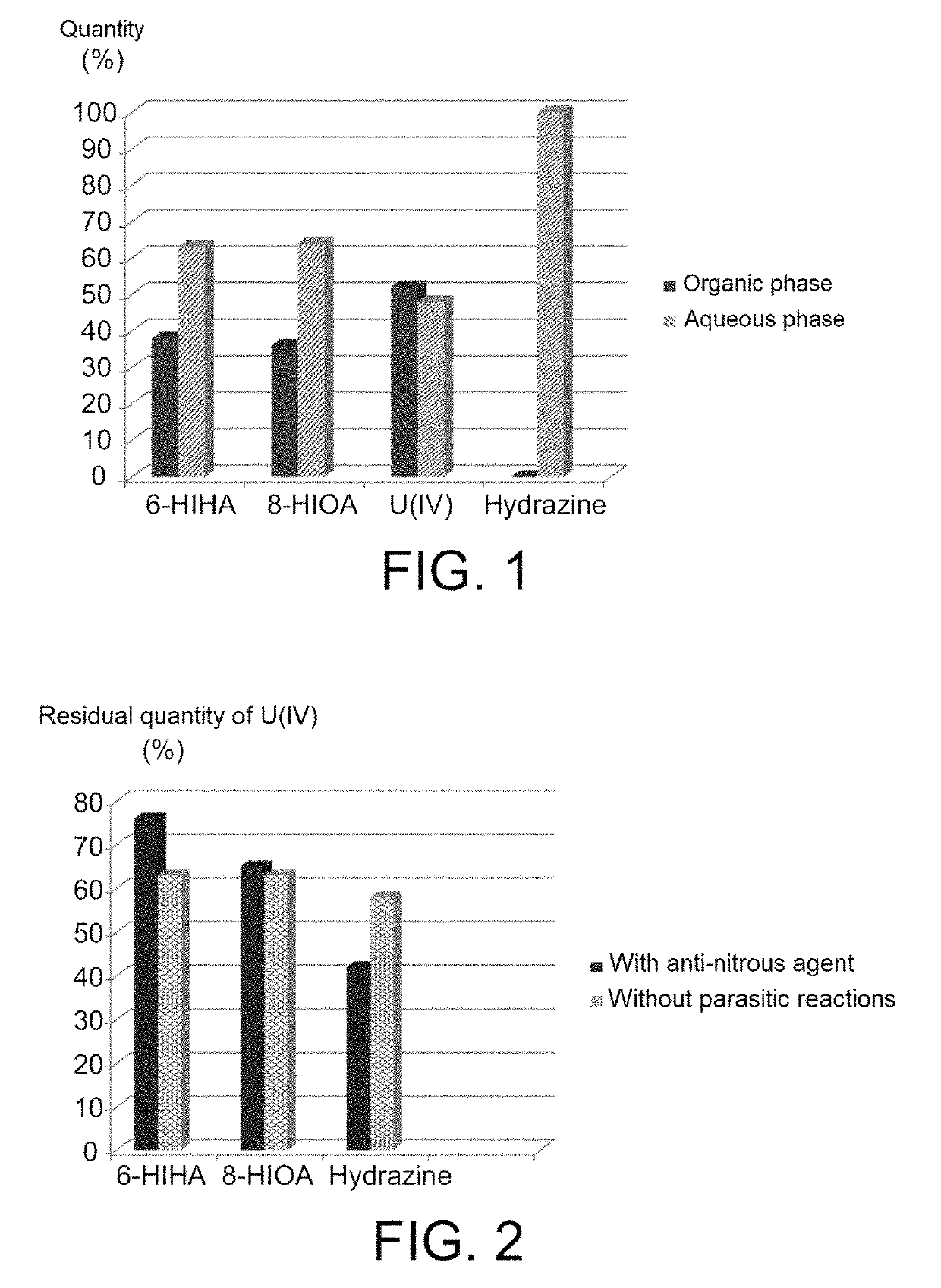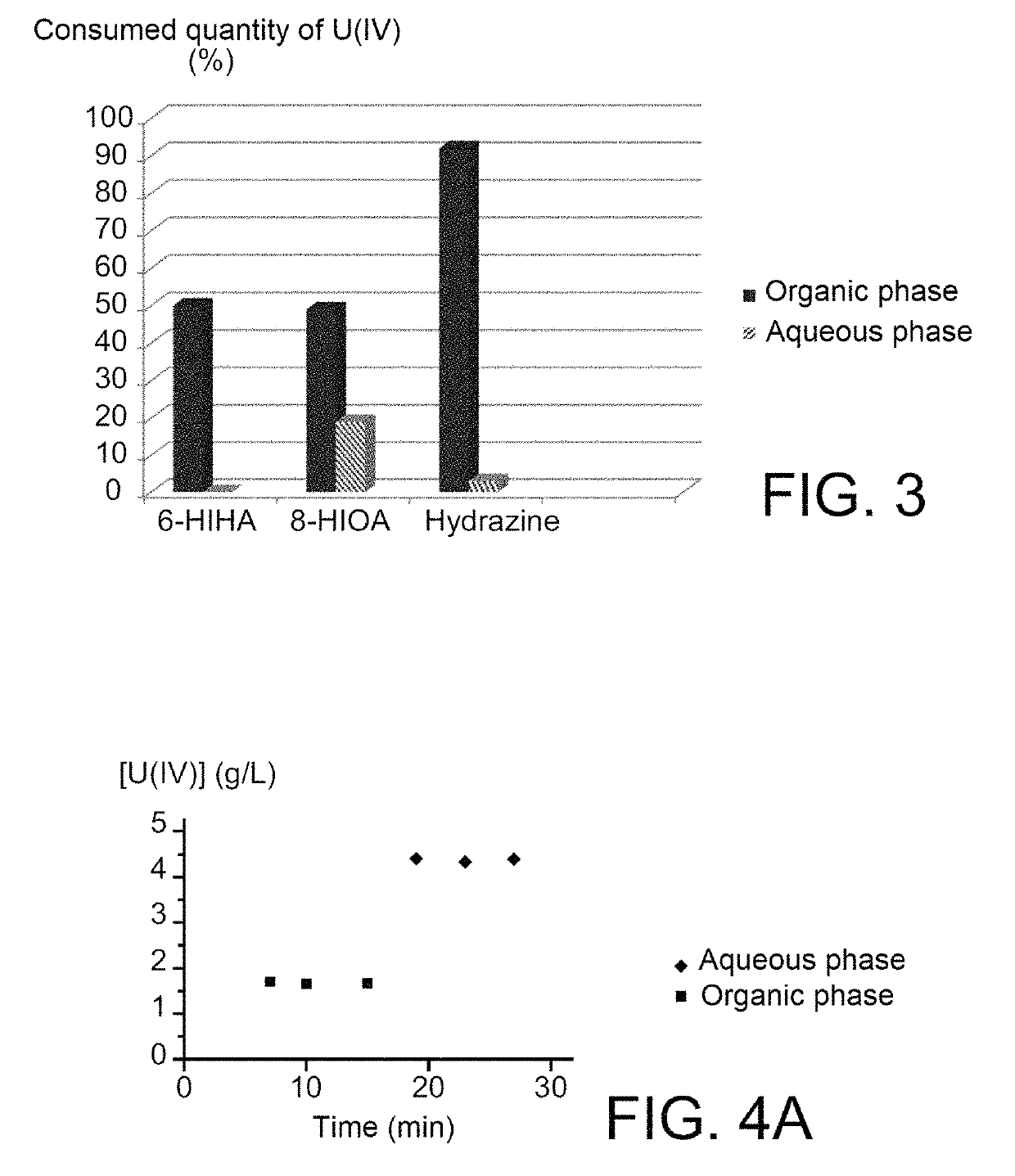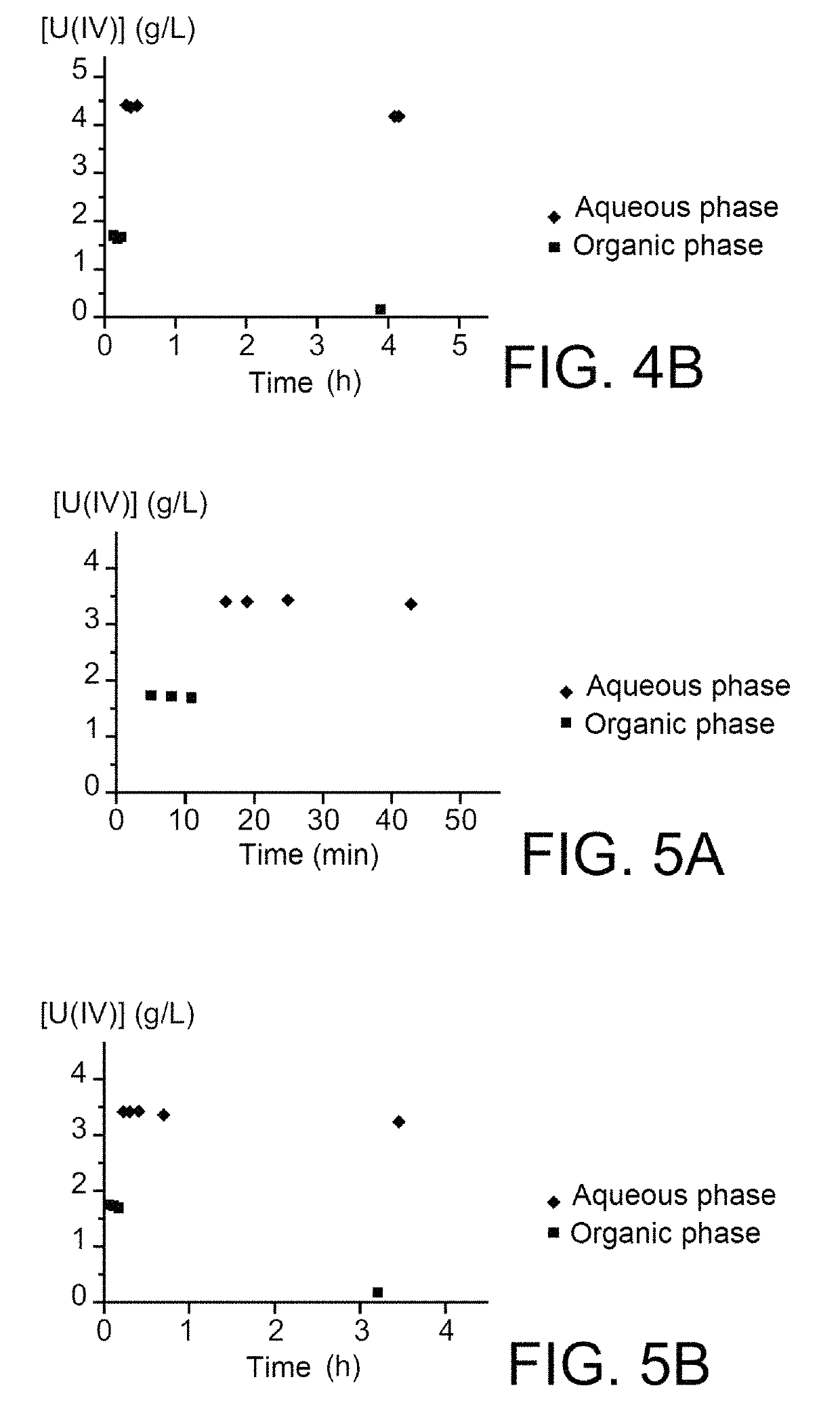Use of hydroxyiminoalkanoic acids as anti-nitrous agents in operations of reductive stripping of plutonium
- Summary
- Abstract
- Description
- Claims
- Application Information
AI Technical Summary
Benefits of technology
Problems solved by technology
Method used
Image
Examples
example 1
of 6-Hydroxyiminohexanoic and 8-Hydroxyiminooctanoic Acids
[0068]6-hydroxyiminohexanoic acid (also called «6-HIHA» in the remainder hereof) is synthesised applying the following reaction scheme:
[0069]
where 2-hydroxycyclohexanone, denoted 1, commercially available in its dimer form (Sigma-Aldrich), is oxidized by sodium periodate (1.5 eq.) in a mixture of tetrahydrofuran and water, to give 6-oxohexanoic acid, denoted 2, with near-quantitative yield (98%); after dissolution in ethanol, the oxoacid 2 is reacted with hydroxylamine hydrochloride (8 eq.) in an aqueous medium and in the presence of sodium hydroxide (40° C., 1 hour), to give 6-HIHA with a yield of 60%.
[0070]The global yield over the two steps is 58%.
[0071]8-hydroxyiminooctanoic acid (also called «8-HIOA» in the remainder hereof) is synthesised applying the following reaction scheme:
[0072]
where 8-bromooctanoic acid, denoted 1′, commercially available (Sigma-Aldrich), is treated with potassium hydroxide (2.7 eq.) in a mixture ...
example 2
s of 6-Hydroxyiminohexanoic and 8-Hydroxyiminooctanoic Acids
[0074]2.1—Coefficients of Distribution
[0075]The coefficients of distribution, denoted D, of 6-HIHA and 8-HIOA are determined at an acidity close to 0.9 mol / L, this acidity representing the acidities at which most of the plutonium contained in the extractors dedicated to reductive stripping operations of plutonium is placed in the PUREX method.
[0076]For doing that, extraction tests were performed using:[0077]two organic phases comprising 30% (v / v) of TBP in HTP, in the first of which 6-HIHA was solubilised in a proportion of 0.05 mol / L, and in the second of which 8-HIOA was solubilised in a proportion of 0.01 mol / L; and[0078]two aqueous phases corresponding to two aliquots of one same aqueous solution of nitric acid at 1 mol / L.
[0079]Each of the organic phases was contacted with one of the two aqueous phases for 5 minutes, under agitation and at ambient temperature (22-25° C.), with an O / A (organic / aqueous) volume ratio of 1....
PUM
| Property | Measurement | Unit |
|---|---|---|
| temperature | aaaaa | aaaaa |
| volume ratio | aaaaa | aaaaa |
| volume ratio | aaaaa | aaaaa |
Abstract
Description
Claims
Application Information
 Login to View More
Login to View More - R&D
- Intellectual Property
- Life Sciences
- Materials
- Tech Scout
- Unparalleled Data Quality
- Higher Quality Content
- 60% Fewer Hallucinations
Browse by: Latest US Patents, China's latest patents, Technical Efficacy Thesaurus, Application Domain, Technology Topic, Popular Technical Reports.
© 2025 PatSnap. All rights reserved.Legal|Privacy policy|Modern Slavery Act Transparency Statement|Sitemap|About US| Contact US: help@patsnap.com



